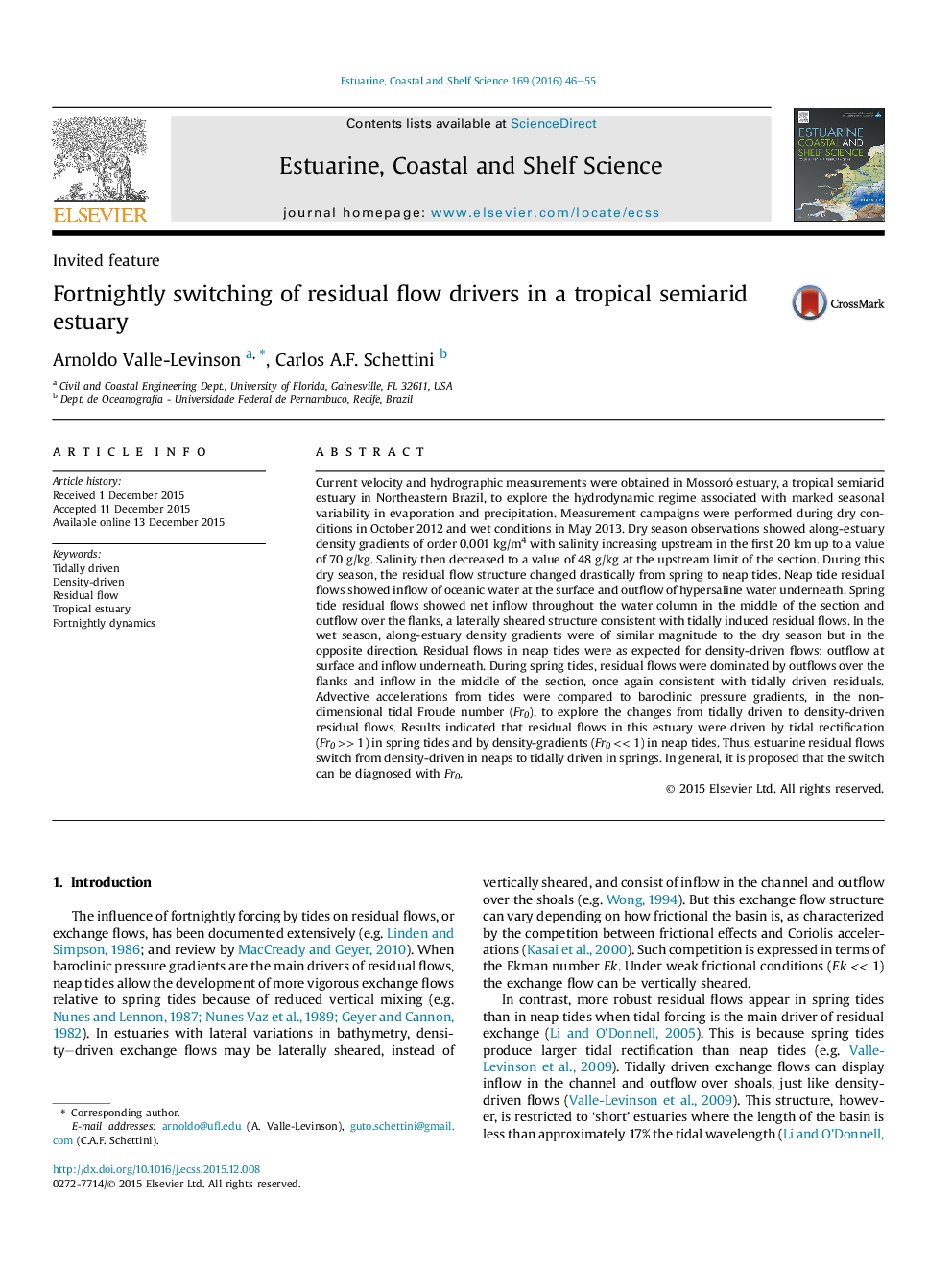| کد مقاله | کد نشریه | سال انتشار | مقاله انگلیسی | نسخه تمام متن |
|---|---|---|---|---|
| 6384508 | 1626630 | 2016 | 10 صفحه PDF | دانلود رایگان |
Current velocity and hydrographic measurements were obtained in Mossoró estuary, a tropical semiarid estuary in Northeastern Brazil, to explore the hydrodynamic regime associated with marked seasonal variability in evaporation and precipitation. Measurement campaigns were performed during dry conditions in October 2012 and wet conditions in May 2013. Dry season observations showed along-estuary density gradients of order 0.001Â kg/m4 with salinity increasing upstream in the first 20Â km up to a value of 70Â g/kg. Salinity then decreased to a value of 48Â g/kg at the upstream limit of the section. During this dry season, the residual flow structure changed drastically from spring to neap tides. Neap tide residual flows showed inflow of oceanic water at the surface and outflow of hypersaline water underneath. Spring tide residual flows showed net inflow throughout the water column in the middle of the section and outflow over the flanks, a laterally sheared structure consistent with tidally induced residual flows. In the wet season, along-estuary density gradients were of similar magnitude to the dry season but in the opposite direction. Residual flows in neap tides were as expected for density-driven flows: outflow at surface and inflow underneath. During spring tides, residual flows were dominated by outflows over the flanks and inflow in the middle of the section, once again consistent with tidally driven residuals. Advective accelerations from tides were compared to baroclinic pressure gradients, in the non-dimensional tidal Froude number (Fr0), to explore the changes from tidally driven to density-driven residual flows. Results indicated that residual flows in this estuary were driven by tidal rectification (Fr0 >> 1) in spring tides and by density-gradients (Fr0 << 1) in neap tides. Thus, estuarine residual flows switch from density-driven in neaps to tidally driven in springs. In general, it is proposed that the switch can be diagnosed with Fr0.
244
Journal: Estuarine, Coastal and Shelf Science - Volume 169, 5 February 2016, Pages 46-55
